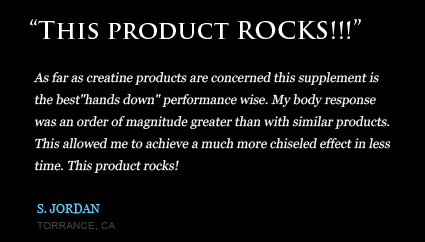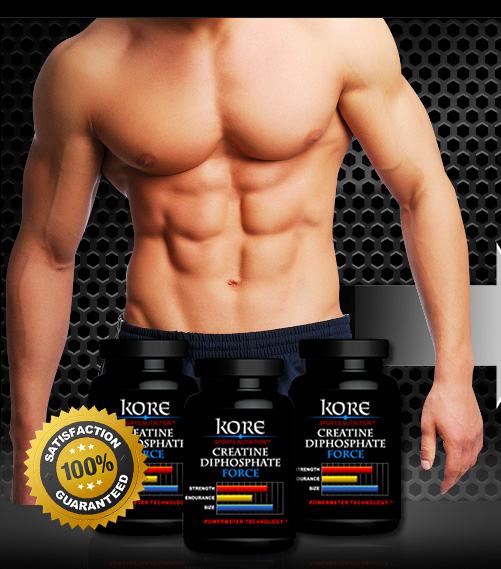Creatine DiPhosphate Force
Creatine is one of the most studied nutritional sports supplement being sold today.
Creatine is one of the most studied nutritional sports supplement being sold today. Its benefits have been scientifically proven in numerous clinical studies Creatine works by giving our muscles the ability to refuel quickly and generate more energy. The ATP in our bodies will lose phosphate molecules and become adenosine diphosphate (ADP), but to produce energy again it must be converted back to ATP. When the ATP is in this depleted state it can be recharged by creatine phosphate, which is the creatine that is stored in our cells. So, larger amounts of creatine phosphate gives the ATP a bigger and faster charge which translates into more performance time for you. Thus, Increasing strength and lean body mass, improving endurance, and improving cognitive brain function and reducing mental fatigue. Creatine phosphate helps muscles recover quicker after workouts, allowing you to workout sooner and with less muscle soreness.This is good news for short duration burst sports like MMA, Surfing, Skateboarding, Football, Weightlifting, and Motocross.
Why We Use Waxy Maize Starch
- Supports extraordinary muscle fullness !
- Produces a natural surge of post-workout insulin,the most anabolic hormone.
- Delivers post-workout nutrients like Creatine faster than ever before - faster recovery.
- Quick replenishment of glycogen gives your body an immediate "pump" you can physically feel in your muscles post workout.


Because of its high molecular weight and low osmolality, Waxy Maize is able to basically bypass the stomach and get immediately absorbed in the small intestines. Because of this property, waxy maize also helps to improve the absorption rates of various supplements such as Creatine and amino acids. Studies have found that HMW carbohydrates such as waxy maize raises insulin levels about the same as dextrose; however, because of its low osmolality, it bypasses the stomach, and you will not experience any stomach bloating that you might experience with dextrose. What’s more noteworthy is that HMW carbohydrates leads to increased glycogen resynthesis post workout. So, what you have is a carbohydrate that gets to the muscles fast, does not cause stomach bloating, increases nutrient uptake, and also increases glycogen synthesis post workout.
Studies have found that supplementing a HMW carbohydrate results in a more sustained glucose and insulin response. Furthermore, because of Waxy Maize’s ability to increase glycogen resynthesis post workout, it is found that consuming a HMW carb improves performance for subsequent exercises. In a study involving 8 healthy men, the subjects cycled to exhaustion, and were then immediately given a one litre solution containing either a placebo, a 100g low molecular weight carbohydrate, or a 100g high molecular weight carbohydrate. A 2 hour rest followed the consumption of the drink, and then a 15 minute time trial was performed on a cycle ergometer. The study found that ingestion of the very high molecular weight carbohydrate resulted in faster and greater increase in blood glucose and serum insulin concentration compared to the low molecular weight carb and the placebo. The HMW carbohydrate group had a grater work output during the 15 minute time trial, suggesting that HMW carbohydrate such as waxy maize can help optimize performance by “facilitating rapid re-synthis of the muscle glycogen store during recovery”. Aside from scientific studies, there’s plenty of anecdotal evidence to suggest that Waxy Maize is an optimal carbohydrate to consume immediately post workout.

Science of Creatine

The phosphate group in creatine Diphosphate is attached by a “high-energy” bond like that in ATP. Creatine Diphosphate derives its high-energy phosphate from ATP and can donate it back to ADP to form ATP. Creatine Diphosphate + ADP ↔ creatine + ATP. The pool of creatine Diphosphate in the fiber is about 10 times larger than that of ATP and thus serves as a modest reservoir of ATP.
ATP and Creatine Diphosphate (also called phosphocreatine or PCr for short) make up the ATP-PCr system. PCr is broken down releasing a phosphate and energy, which is then used to rebuild ATP. Recall, that ATP is rebuilt by adding a phosphate to ADP in a process called phosphorylation. The enzyme that controls the break down of PCr is called creatine kinase.
The ATP-PCr energy system can operate with or without oxygen but because it doesnt rely on the presence of oxygen it said to be anaerobic. During the first 5 seconds of exercise regardless of intensity, the ATP-PCr is relied on almost exclusively. ATP concentrations last only a few seconds with PCr buffering the drop in ATP for another 5-8 seconds or so. Combined, the ATP-PCr system can sustain all-out exercise for 3-15 seconds and it is during this time that the potential rate for power output is at its greatest.

